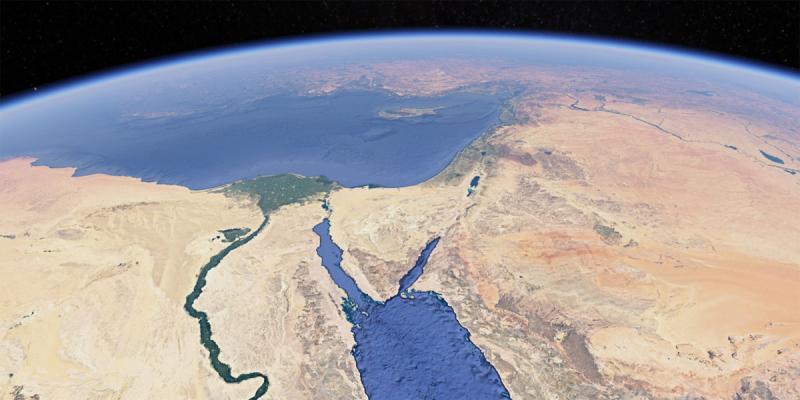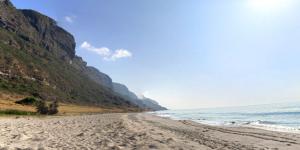You are here
Book of Mormon Central is in the process of migrating to our new Scripture Central website.
We ask for your patience during this transition. Over the coming weeks, all pages of bookofmormoncentral.org will be redirected to their corresponding page on scripturecentral.org, resulting in minimal disruption.
This concern is based on an unnecessary reading of the text. Nephi stated: “And it came to pass that [Lehi] departed into the wilderness … And he came down by the borders near the shore of the Red Sea; and he traveled in the wilderness in the borders which are nearer the Red Sea; and he did travel in the wilderness with his family … And it came to pass that when he had traveled three days in the wilderness, he pitched his tent” (1 Nephi 2:5–6).
Some have interpreted Nephi’s words to mean that it took only three days to get from Jerusalem to the Red Sea, but this reading seems unlikely.1 The distance between Jerusalem and the Red Sea by road is about 180 miles (290 Km). Even if the party traveled with loaded camels, as would seem necessary in order to carry their provisions (1 Nephi 2:4; 3:9), they would normally have covered an average of only 20 to 25 miles (32–40 km) per day.
Lehi would likely have fled Jerusalem as quickly as possible, pushing his traveling party much faster than under normal travel conditions, but the journey of three days does not refer to the distance from Jerusalem to the Red Sea. Rather, their party first departed from Jerusalem and came down near the Red Sea, and after that traveled three more days until they reached their first campsite in the Valley of Lemuel.2 It makes clear sense to understand the three-day journey as a reference to the specific segment of wilderness travel “near the shore of the Red Sea,” which had just been mentioned in the previous verse. Thus, the most likely interpretation, based on sound textual analysis, also happens to be the most geographically realistic.
It is also possible that the family’s three-day journey, which echoes the Exodus narrative, had symbolic legal significance. In this case, the “three days” may not necessarily refer to an exact duration of time and distance, but rather to the technical limit of the sacrificial jurisdiction of the temple in Jerusalem.3
Either way, the supposed error in the Book of Mormon is eliminated.
- 1. “This, it must be confessed, was a most extraordinary journey; to go from Jerusalem to the Red Sea, with his wife and children, tents and baggage, in three days, was to travel with unparalleled celerity,” Gimel, “Book of Mormon,” Christian Watchman, 7 October, 1831. “We can pass without comment that remarkable journey which these people made from Jerusalem to the Red Sea, a distance approximating, if not exceeding, two hundred miles, on foot, carrying food and tents, and possibly some necessary change of clothing, and apparently in the space of three days, except as we may say that they allowed no grass to grow under their feet en route.” Samuel Traum, Mormonism against Itself (Cincinnati, OH: The Standard Publishing Company, 1910), 90.
- 2. On the question of whether the Valley of Lemuel has been found, see Book of Mormon Central, “Have the Valley of Lemuel and the River Laman Been Found? (1 Nephi 2:6),” KnoWhy 286 (March 13, 2017).
- 3. Book of Mormon Central, “Why Would Lehi Offer Sacrifices Outside of Jerusalem? (1 Nephi 7:22),” KnoWhy 9 (January 12, 2016). A passage from the Dead Sea Scrolls (11Q19 52:13–15) specifically reads, “You shall not slaughter a clean ox or sheep or goat in all your towns, near to my temple (within) a distance of a three-days’ journey; nay, but inside my temple you shall slaughter it, making it a burnt offering or a peace offering.” Donald W. Parry and Emanuel Tov, The Dead Sea Scrolls Reader: Volume I (Leiden/Boston: Brill, 2013), 689–699.
Further Reading
S. Kent Brown, “New Light from Arabia on Lehi’s Trail,” in Echoes and Evidences of the Book of Mormon, ed. Donald W. Parry, Daniel C. Peterson, and John W. Welch (Provo, UT: FARMS, 2002), 56–62.
Warren P. Aston, Lehi and Sariah in Arabia: The Old World Setting of the Book of Mormon (Bloomington, IN: Xlibris Publishing, 2015), 38–42.
Hugh Nibley, Lehi in the Desert/The World of the Jaredites/There Were Jaredites, The Collected Works of Hugh Nibley, Volume 5 (Salt Lake City and Provo, UT: Deseret Book and FARMS, 1988), 54–58.





